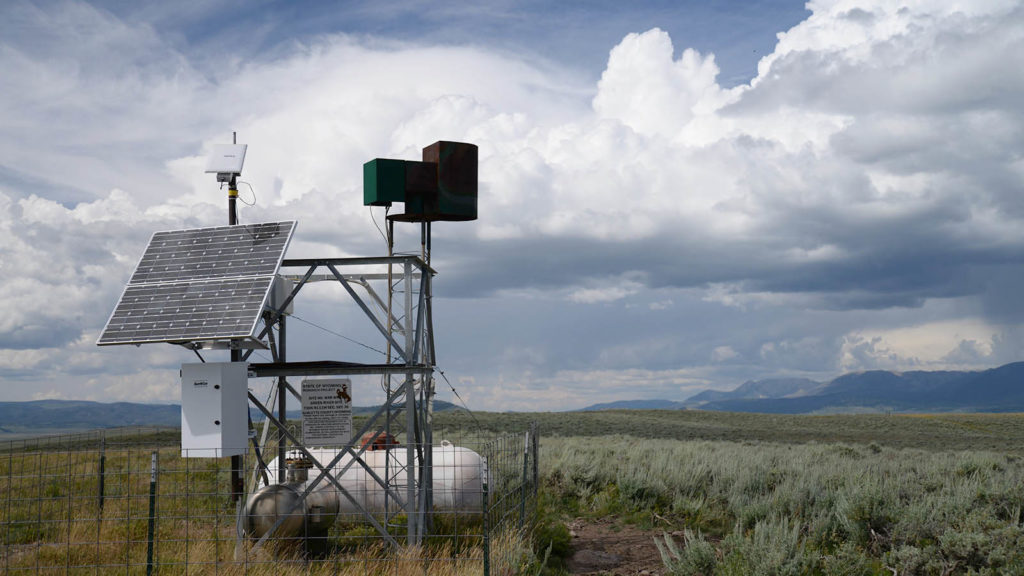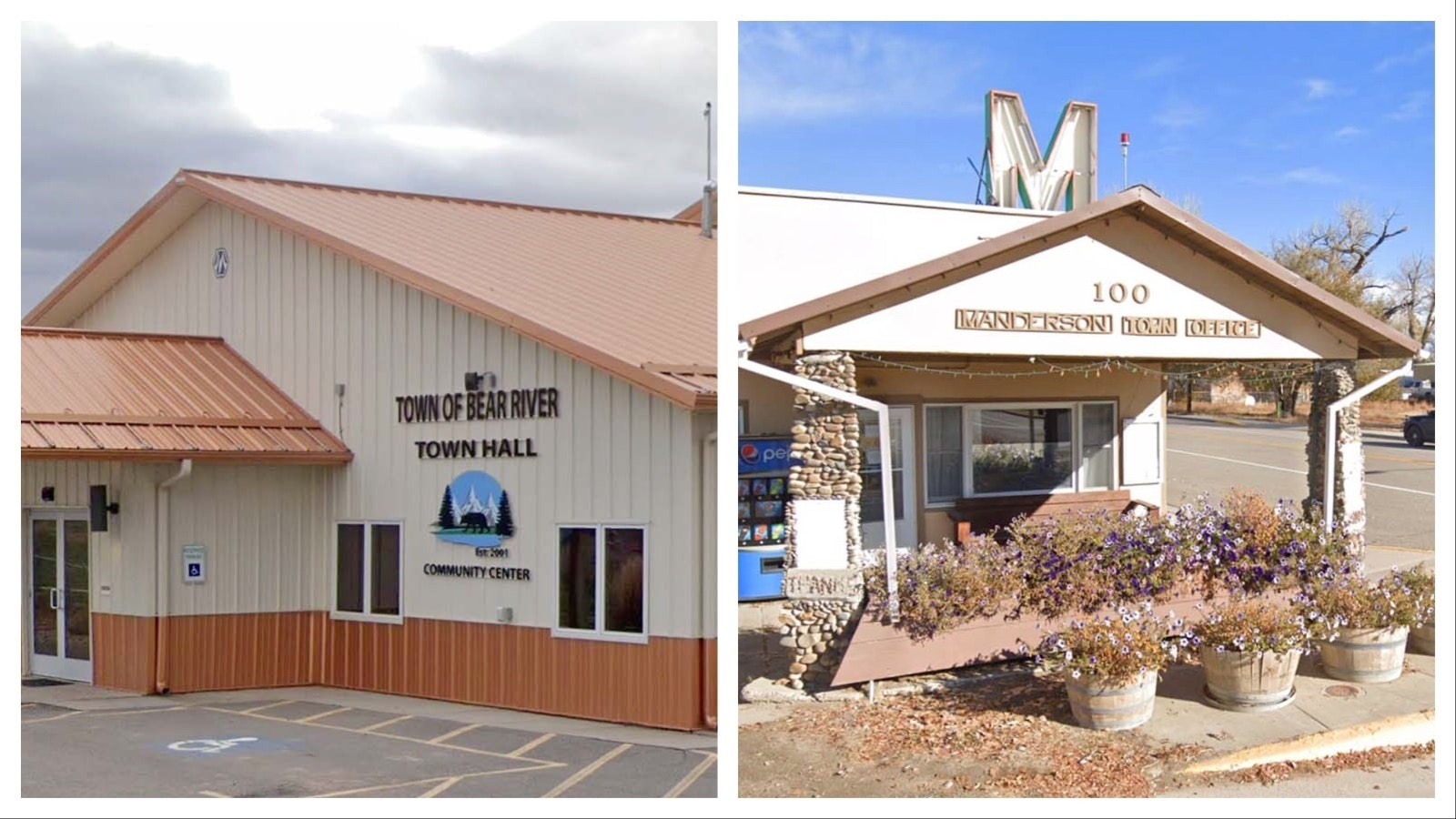By Leo Wolfson, State Political Reporter
Leo@Cowboystatedaily.com
From the fiery burst of a flare, silver iodide is injected into the atmosphere, creating a chemical reaction that under ideal conditions causes powdery, white flakes to fall from the sky.
The practice is part of a state effort to battle a lingering drought and enhance winter snowpack in the Wyoming’s mountain ranges through cloud seeding.
Wyoming is all onboard with cloud seeding and has been doing it for some time.
On Wednesday, the state Legislature’s Select Water Committee voted unanimously to continue paying for the program.

Another Important Crop
Cloud seeding is seen as a potential benefit for Cowboy State farmers, kayakers and other water enthusiasts, and as a way to bolster statewide and local water reserves. By augmenting the mountain snowpacks, supporters hope the seeding will counteract the effects of climate change and help quench the thirst of drought-stricken areas throughout the state.
The Colorado River Basin has been devastated for 22 years by unprecedented drought. This ties into recent studies showing large patches of the West experiencing major snowpack declines over the last few decades.
Airborne Expansion
Wyoming’s cloud seeding operations formally began in 2014 on the heels of the Wyoming Weather Modification Pilot Project program, which had run for nine years prior, but relied solely on ground-based cloud seeding generators.
What started as a project focused in the Wind River Mountains has since expanded to other parts of Wyoming. Airborne seeding, which involves shooting iodide out of flares strapped to the wings of an airplane, was added in 2018.
Enhance, Not Guarantee
Cloud seeding uses silver iodide to enhance ice crystal production within clouds.
When seeding is done from a plane, the pilot ignites one flare at a time, shooting the compound into the cloud. The iodide causes water droplets in the clouds to form ice crystals that become heavier and fall faster, which sometimes initiates snowfall.
“Cloud seeding is simply a mechanism to help initiate the snowfall process within a cloud,” said Julie Gondzar, project manager and meteorologist for the Wyoming Water Development Office, adding that a specific temperature, moisture and water content are necessary for success, even when used on clouds that already have a high potential to produce snow.
Gondzar said the pilot stays in constant communication with the project meteorologist at all times as the two discuss the best time and place within a cloud to ignite the flares.
“We have an incredible team of meteorologists, pilots and technicians that work together to find the best weather conditions for seeding and use our equipment efficiently to help increase water supply where we can,” Gondzar said.
These meteorologists often work around the clock to determine the best time to perform seeding missions.

Costs
The projected total cost of the Medicine Bow and Sierra Madre airborne seeding in next year’s budget is $875,000, up slightly from the spring. The Cheyenne Board of Public Utilities chips in $50,000 annually for this service.
Airborne cloud seeding has been conducted each year in the Medicine Bow and Sierra Madre ranges since 2018.
In late 2021, the Wyoming Water Development Commission advanced a proposal by the state Water Development Office to add two ground-based generators in the Sierra Madre mountains and add two weeks to the seeding season. The cost of these additions was $316,000.
There also are 10 remote-controlled, ground-based generators located on the western and southern aspects of the Wind River Range. Total cost to run all of the generators is $805,000, but the state only expects to foot $301,000 of this bill next year.
Timing Is Key
Gondzar said the ground-based generators use a small propane-ignited flame to aerosolize and disperse silver iodide into the atmosphere. They are only turned on when needed and don’t run all the time. Just like from the air, officials wait for the right conditions to start seeding.
“This ensures our seeding plume reaches our target area precisely and at optimal meteorological conditions over the mountain range,” Gondzar said.
Study Underway
In a separate bill during the last session, the Legislature also approved a $300,000 cost-benefit analysis of the Medicine Bow-Sierra Madre seeding, part of a $5.5 million omnibus water planning bill passed nearly unanimously. This analysis was performed to better study how effective cloud seeding efforts have been, with the results expected in late fall 2023.
What Does It Cost?
A cost-sharing agreement in the Colorado River Basin was finalized in 2018 for the ground-based efforts, which extends through fall 2026. Under the agreement, Wyoming pays 37% and the “other Colorado River Basin water users or other interested parties” are on the hook for the remaining 63%.
Entities that have participated in funding Wyoming’s cloud seeding project include several in Green River, the Southern Nevada Water Authority, the Central Arizona Water Conservancy District and the Colorado River Board of California, according to the Wyoming Water Development Commission.
Total cost of the statewide program this year, when adding in out-of-state and other contributions, is budgeted at $2 million. Wyoming is paying for roughly $1.4 million of this cost. That state share of the cost is dropping to $1.1 million this year, as the cost-benefit analysis was a one-time expense.
Cloud Seeding ‘Not Voodoo’
State Sen. Evan Simpson, R-Afton, chair of the Select Water Committe, said he has seen a noticeable shift in public confidence when it comes to the seeding.
“Four to five years ago, we were getting a lot of questions on the floor. We’re not getting that so much anymore,” he said. “It’s not voodoo, it’s an actual, real process that creates more moisture on the ground.”
Controversy
Wyoming is one of at least eight states to engage in cloud seeding. Some cloud seeding efforts are performed to increase rainfall while others are done to prevent hailstorms. According to Scientific American, in 2021, the U.S. military dumped nearly 200 pounds of dry ice into a cyclone that was churning off the coast of Florida.
Some critics of the programs have equated cloud seeding to “playing God,” while others have questioned how effective it can be.
“I’m not entirely sure if I would advocate for people to start doing this aggressively right now,” Armin Sorooshian, a chemical and environmental engineering professor at the University of Arizona, told The Daily Beast. “We need to learn more.”
A 2017-2020 study in Idaho showed that three of 18 cloud-seeding events there were successful, according to the National Center for Atmospheric Research and the University Corporation for Atmospheric Research.
Not A Magic Bullet
Gondzar said people need to have realistic expectations about what cloud seeding can achieve. She said wintertime clouds over mountain ranges are naturally inefficient, so seeding simply works to improve an already low efficiency.
“Cloud seeding cannot create clouds or move clouds,” she said. “Cloud seeding cannot put moisture or water into the sky that wasn’t already there, cloud seeding cannot make it snow where there wasn’t already a natural meteorological potential for snow to occur.”
Some advocacy groups have raised questions about the environmental risk of using silver iodide, but the U.S. Public Health Service says cloud-seeding is safe.
A group of farmers formally opposed cloud seeding in North Dakota in 2017, arguing the seeding had caused rainfall to decline. This prompted North Dakota Gov. Doug Burgum to demand a review of the state’s program.
Political Arguments
There’s also a political element to the seeding discussion as far as who pays for and receives benefits from the work.
Sen. Larry Hicks, R-Baggs, objected to some of the proposed expansions to the program in 2021, arguing that Wyoming doesn’t use or get credit for any of the additional runoff that would result from the cloud seeding.
But legislative support for seeding in Wyoming has been mostly overwhelming and bipartisan. Some of the most conservative legislators in the state, including Sens. Tim French, R-Powell, and Brian Boner, R-Douglas, support it.
“It’s one more thing the state can do to ensure moisture stays in Wyoming,” Boner said. “So far, they’ve done a couple of studies, and it seems like it does have an impact.”
Still Some Unanswered Questions
The biggest uncertainty about cloud seeding is how perfect or not the conditions have to be for it to be effective.
In 2003, the National Research Council published a comprehensive report on weather modification, finding that “there is still no convincing scientific proof of the efficacy of intentional weather modification efforts.”
But studies have become more accurate and convincing about cloud seeding effectiveness in recent years.
“There’s been some exciting developments with the technology in recent years,” said Barry Lawrence, deputy director of the planning for Wyoming Water Development.
A 2014 research study analyzing the results of Wyoming’s pilot program showed cloud seeding causing a 5%-15% increase in the “efficiency” of mountain snow. Newer calculations estimate an additional annual water flow from 12,000 to 49,000 acre-feet as a result of seeding.
“There have been industry-wide leaps and advances with the science,” Lawrence said. “There’s obviously folks with concerns, but it’s usually a matter of educating them on how it works.”





